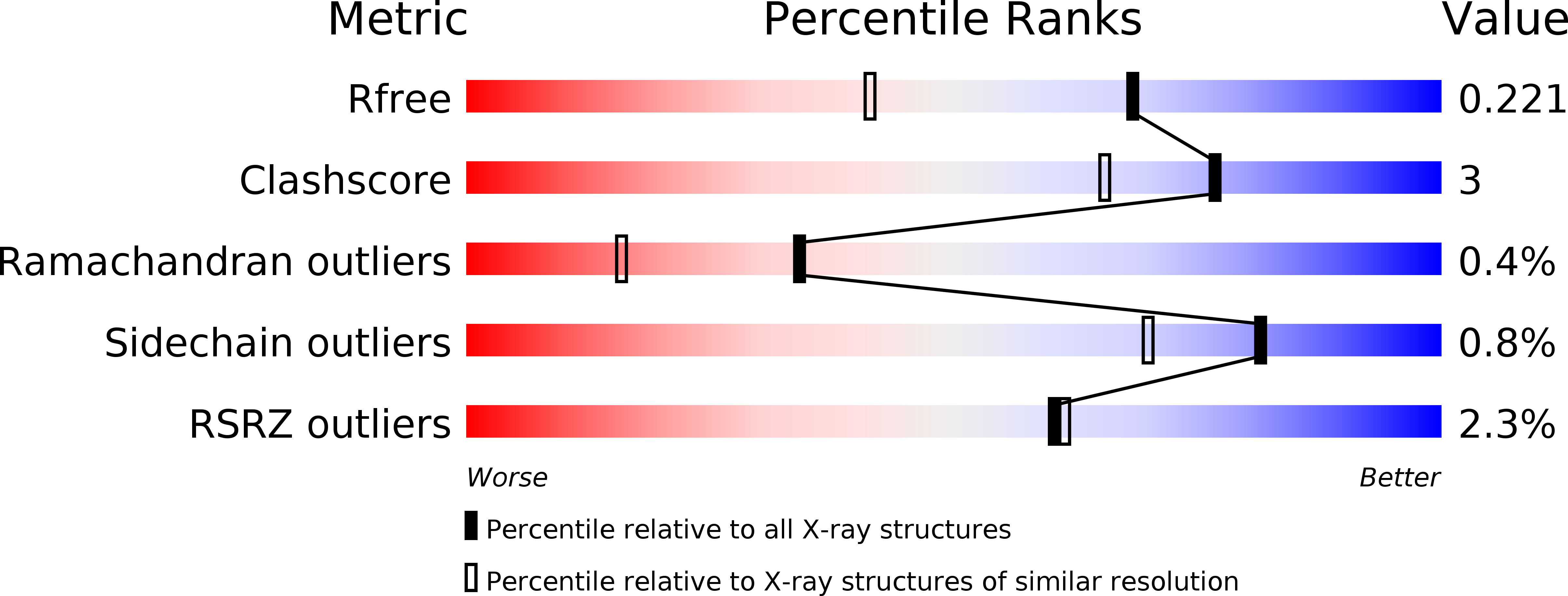
Deposition Date
2010-04-15
Release Date
2011-05-04
Last Version Date
2023-12-20
Entry Detail
PDB ID:
2XC1
Keywords:
Title:
Full-length Tailspike Protein Mutant Y108W of Bacteriophage P22
Biological Source:
Source Organism:
ENTEROBACTERIA PHAGE P22 (Taxon ID: 10754)
Host Organism:
Method Details:
Experimental Method:
Resolution:
1.65 Å
R-Value Free:
0.21
R-Value Work:
0.16
R-Value Observed:
0.16
Space Group:
P 21 21 21


